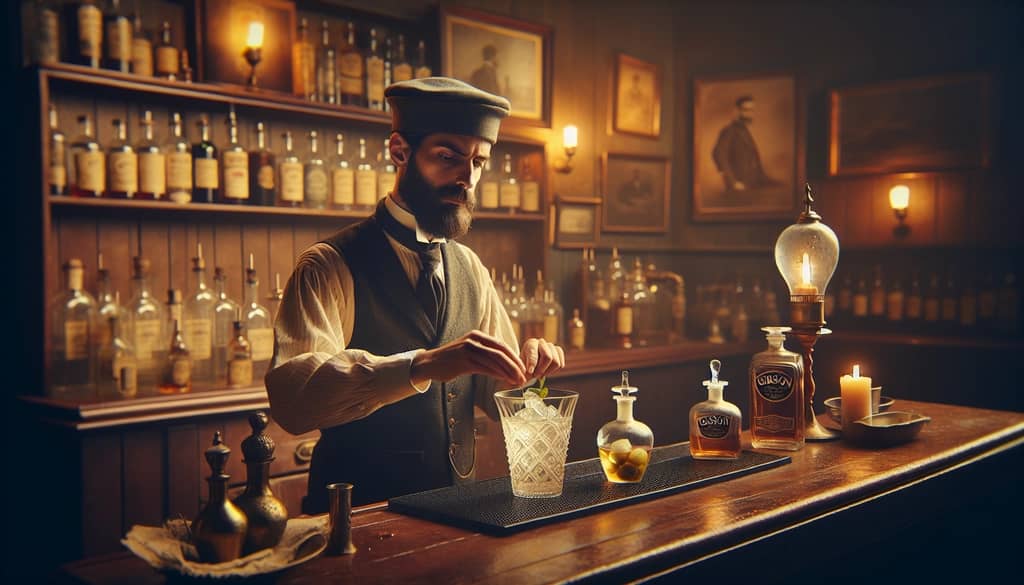Updated on: 6/3/2025
Gibson vs. Martini: Understanding the Subtle Differences

When it comes to classic cocktails, both the Gibson and the Martini have made an indelible mark on bar menus worldwide. While they may appear similar at first glance, understanding the subtle differences between the two can enhance your cocktail-making prowess and appreciation for mixology. In this article, we will explore these iconic drinks, highlighting ingredient variations, taste differences, and providing insights to help you choose your preferred sip.
Fast Facts
- Origin:, Both cocktails hail from the early 20th century, but the Gibson's origins are slightly more mysterious compared to the Martini.
- Ingredients:, The key difference lies in the garnish: a pickled onion for the Gibson, an olive or lemon twist for the Martini.
- Taste Profile:, Gibson is known for its subtle sweetness; Martini offers a complex, dry profile.
- Popularity:, While the Martini enjoys broader popularity, the Gibson is cherished by those who appreciate unique garnishes.
- Serving:, Both are typically served in a classic cocktail glass, showcasing their elegant appearance.
History of the Gibson and Martini

The Martini's origins date back to the late 19th century, with its exact beginnings often debated among cocktail historians. Some attribute its development to bartender Jerry Thomas, while others link it to the city of Martinez, California. The Gibson emerged slightly later, with its inception credited to Charles Dana Gibson, a 20th-century illustrator. Legend suggests Gibson requested a Martini with a pickled onion instead of the typical olive, crafting a drink that would later bear his name.
Ingredients and Preparation

Both the Gibson and Martini share a foundational mix of gin and dry vermouth. However, it's the garniture that primarily sets them apart:
- Gibson Cocktail:
- Gin: 60 ml
- Dry Vermouth: 10 ml
- Garnish: Pickled onion
- Preparation: Stirred with ice and strained into a chilled cocktail glass.
- Martini Cocktail:
- Gin (or Vodka): 60 ml
- Dry Vermouth: 10 ml
- Garnish: Olive or lemon twist
- Preparation: Stirred or shaken with ice, then strained into a chilled cocktail glass.
Taste Differences
- Gibson: The pickled onion imparts a subtle sweetness and tangy undertone, offering a softer palate experience.
- Martini: Depending on the choice of garnish, the flavor can range from the briny, savory notes of an olive to the zesty aroma of a lemon twist, often resulting in a crisp, dry finish.
Popular Variations and Serving Suggestions
While both cocktails adhere to traditional preparation methods, various adaptations offer enthusiasts a chance to experiment:
- Gibson Variations:
- Hendrick’s Gibson: Using Hendrick's gin for its floral, cucumber notes.
- Vodka Gibson: A subtle twist for vodka lovers seeking the unique onion garnish.
- Martini Variations:
- Dirty Martini: Incorporating olive brine for an extra savory punch.
- Dry Martini: Minimal vermouth for a potent, gin-centered flavor.
- Espresso Martini: A modern twist with espresso, ideal for an evening perk.
Choosing Between Gibson and Martini
In deciding between these two distinguished cocktails, consider your taste preference and occasion. If you're intrigued by complex flavor profiles with a touch of sweetness, the Gibson may be your go-to. For those who savor crisp, classic notes with a hint of savory or citrus, a Martini might be more fitting. Ultimately, both the Gibson and Martini embody the elegance and timelessness of classic cocktail culture. To fully appreciate their nuances, consider trying both and discovering which aligns with your palate. Whether stirred, shaken, with an onion, or a twist, these cocktails guarantee a refined experience for any cocktail enthusiast.
Pick your favorite and elevate your next gathering with a touch of mixological sophistication!